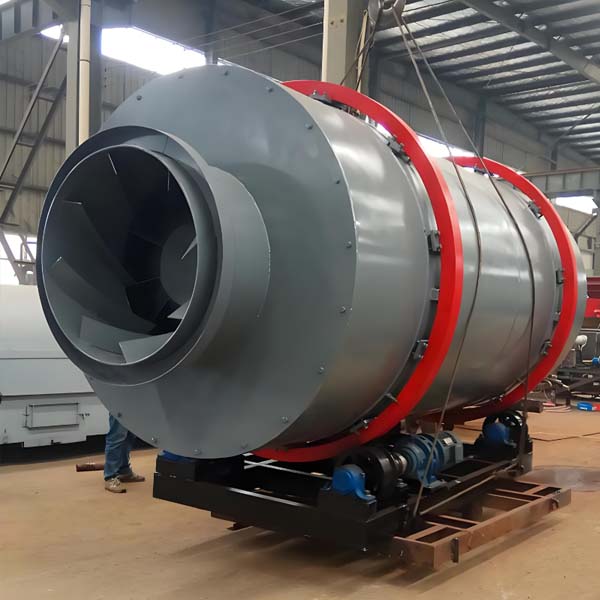The working principle of a three cylinder dryer and its differences from a regular dryer are as follows:
The working principle of a three cylinder dryer
The working principle of a three cylinder dryer is based on the principle of thermal power, and efficient drying of materials is achieved through the structural design of the inner, middle, and outer cylinders. The specific process is as follows:
- Material entering the inner cylinder: The material enters the inner layer of the rotary drum through the feeding device, achieving downstream drying. The material is continuously picked up and scattered under the inner layer of the plate, forming a spiral movement to achieve heat exchange.
- Entering the middle layer for countercurrent drying: After the material moves to the other end in the inner layer, it enters the middle layer. In the middle layer, the material is constantly lifted repeatedly, moving in a forward and backward manner. In this way, the material not only fully absorbs the heat emitted by the inner drum, but also absorbs the heat from the middle drum, while prolonging the drying time and achieving the optimal drying state.
- Entering the outer layer to complete drying: The material reaches the other end of the middle layer and falls into the outer layer, traveling in a rectangular multi loop manner inside the outer drum. The materials that have achieved the drying effect quickly move out of the drum under the action of hot air, while the wet materials that have not achieved the drying effect cannot move quickly due to their own weight. They are fully dried in the outer rectangular plate to achieve the drying purpose.
The difference between a three cylinder dryer and a regular dryer
- Structural differences:
- Three cylinder dryer: composed of three independent hot air cylinders, each cylinder is equipped with an independent driving device and hot air or gas heating equipment. The cylinders are connected to each other through a transmission device, allowing materials to dry and rotate in different cylinders.
- Ordinary dryer (single drum dryer): composed of a long drum, material enters from one end and is discharged from the other end. It usually includes components such as heat source, dispersing device, belt feeder, feeder, rotary drum, belt discharge machine, induced draft fan, unloader, and distribution cabinet, forming a complete drying system.
- Differences in working principles:
- Three cylinder dryer: It uses materials to dry and rotate in multiple cylinders, and completes the drying process of materials through hot air or gas heating. The material continuously rolls and rotates inside the cylinder, allowing it to be uniformly heated and dried.
- Ordinary dryer: generates hot air through a hot air stove device to dry the material inside the cylinder. The new material lifting plate device has multiple functions such as guidance, flow equalization, and material lifting, which can evenly distribute the material in the radial section of the dryer, fully contact the hot air flow, and achieve the goal of fully utilizing thermal energy.
- Differences in performance characteristics:
- Three cylinder dryer: It has high thermal efficiency and energy saving. Compared with single cylinder dryers of the same specifications, its thermal efficiency can be increased by about 40-50%, saving more than twice the energy consumption. Meanwhile, due to the special structure of the three tube type, its footprint is relatively small, resulting in a corresponding reduction in basic investment. In addition, the three tube dryer is widely used in industries such as chemical, metallurgical, building materials, food, and light industry. Especially for materials with high viscosity and humidity, the three tube dryer has a very good drying effect.
- Ordinary dryer: It has the characteristics of low feed moisture requirements (less than 50%), compact structure, easy installation, reliable operation, low energy consumption, and high thermal efficiency. Its material drying effect is good, easy to achieve automation control, and requires fewer operators. Ordinary dryers are more commonly used in industries such as building materials, metallurgy, chemical, coal, and mineral processing to dry various materials.

